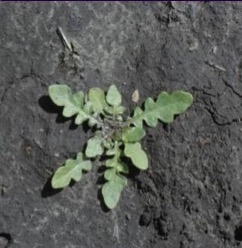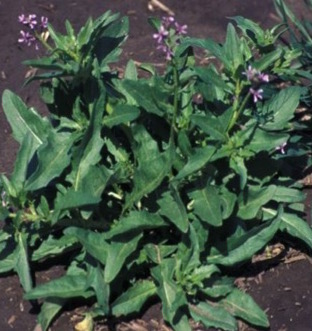Description
- Weed Description: Blue mustard invades disturbed habitats and cultivated lands, reducing crop yields and affecting crop quality (Whitson et al. 1996). It is a problem in winter annual crops, such as winter wheat (Klein et al. 1985). Blue mustard gives off a disagreeable odor (like stale dishrags), and dairy animals eating it may produce off-flavor milk.
- Leaves: Leaves are alternate and oblanceolate, with wavy or coarsely toothed margins, and are partially covered with minute, gland-tipped hairs.
- Stems: Mature plants are 10–50 cm tall, with branches that spread mainly from the base. Stems are partially covered with minute, gland-tipped hairs.
- Flowers: Flowers are small and bluish purple, have 4 petals, and are connected by a stalk to a rough central stem.
- Fruit: Fruits have a conspicuous beak, about one third the length of the pod. These fruits break apart transversely into numerous 2- seeded sections instead of splitting longitudinally as with most mustards.
- Seeds: Seeds are rectangular, with one flat side and one rounded side (Stubbendieck et al. 1995).
- Identifying Characteristics: Blue mustard is commonly found in dry areas such as grain fields, along roadsides, rights-of-way, and disturbed habitats. It can tolerate a wide range of environmental conditions and soils.
(Cited from 'A Guide to Weeds in British Columbia')
Pest image (all)


Scientific name
Chorispora tenella
Pest photo source
Dr. Dallas Peterson, KSU
Weed type
broadleaf
Production period
Preharvest
Weed life cycle
winter annual
Crop type
